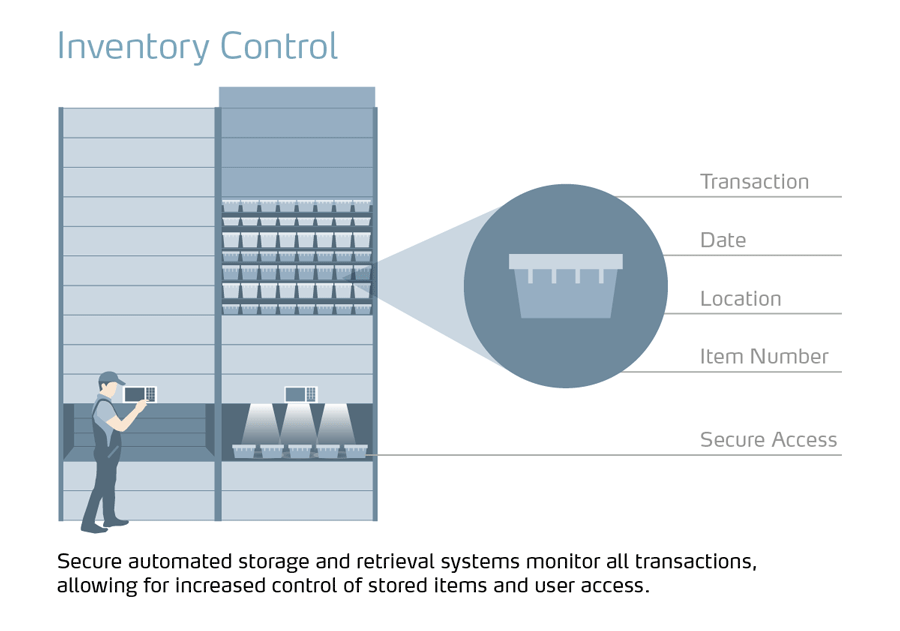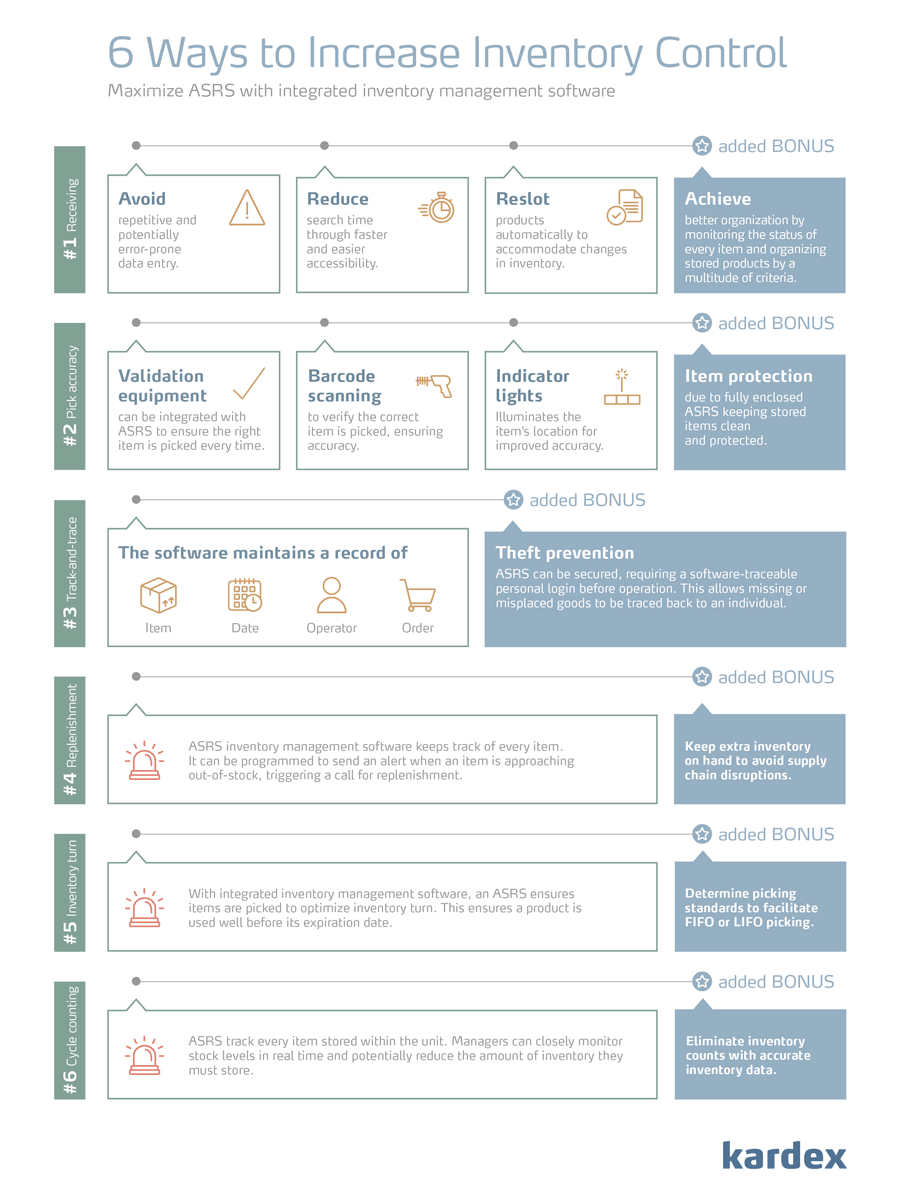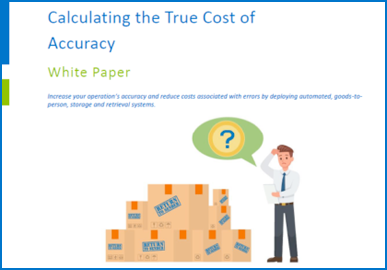Keep track of your products from receiving to shipping with 99.9% accuracy.

To achieve the highest degree of picking accuracy, integrating inventory management software with an automated storage and retrieval system enables smart functionality such as inventory monitoring. In addition to keeping track of the contents stored within the machine, the software also interfaces with a facility’s warehouse management system (WMS) and enterprise resource planning (ERP) systems. This function allows managers to closely monitor stock levels in real time—and potentially eliminate physical counts—for better inventory control.
For example, in systems equipped with an RF barcode scanner, the operator can be required to scan each picked item. The data captured by the scanner is relayed to the inventory control software, which verifies that the picked part is the same one required by the order. This barcode recognition feature can also be used when replenishing inventory in the system. During restocking, the operator scans both the item and its destination to verify placement into the correct storage location. Adding scanning to a storage and retrieval system ensures additional accuracy in order picking and SKU replenishment, significantly reducing mispicks.
Likewise, for operations that stock a few high dollar value items, or regulated products requiring tighter control, the software can be configured to require a barcode scan only when triggered by certain parameters. Qualifiers can be limited to certain transactions, product types or item storage locations, selectively boosting accuracy and control without sacrificing pick speed.
For facilities requiring an operator to match part numbers or pick items from a specific batch, lot or serial number—visual verification can be tedious, time consuming and error-prone. For these applications, barcode scanning can be used to verify with the inventory management software the correct item has been picked, saving time, ensuring accuracy.
Finally, in highly regulated industries such as medical device, healthcare and pharmaceuticals, the same software functionality can be leveraged for its track-and-trace capabilities. That’s because the software maintains a record of the item, the date it was picked, the operator who picked it and the order it fulfilled. Should a defect be identified, or a recall required, the software can quickly determine the locations of both stocked and shipped products.

Doing the Math: How Much Does a Mispick Cost?
The cost of a picking mistake includes not only the cost of the item, but also “the expenses associated with shipping the item back, processing it upon receipt, returning it to stock, and loss of customer satisfaction.”3 Further time is lost in correcting the mistake by picking, packing and shipping the correct item back to the customer.
An estimated 35% of facilities experience ongoing mispick rates of 1% or more. Although 1% sounds like a slim margin for improvement, it adds up quickly, as illustrated here:
A facility picking 250 lines per hour, averaging three SKUs per order, and running one 8-hour shift per day picks 6,000 items daily. If 1% of those picks are incorrect, that translates to 60 mispicks. The cost of each mispick… can average as much as $100 apiece, or more. Therefore, 60 mispicks equal $6,000 in lost revenue a day.


- Vertical Buffer Module- In the middle of a multi-segment shelving system is an aisle, where a moveable mast with a telescopic gripper operates. The control unit sets the gripper in motion picking a bin and transporting it to a picking station.
- Vertical Lift Modules (VLMs) – An enclosed automated storage and retrieval system that consists of two columns of trays with an inserter/extractor in the center. The inserter/extractor automatically locates and retrieves stored trays from both columns and presents them to the operator at a waist-high pick window, eliminating travel and SKU search time.
- Vertical Carousel Modules (VCMs) – Comprised of a series of shelves that rotate around a track—similar to a Ferris wheel—these automated storage and retrieval systems deliver stored items safely and quickly to an ergonomically positioned work counter at the operator’s command, eliminating walk and item search time.
- Horizontal Carousel Modules (HCMs) – Consist of a fixed number of bins mechanically linked to an overhead or floor mounted drive track to form a complete loop. The oval track rotates horizontally to deliver storage locations to an operator at a picking location automatically. These automated storage and retrieval systems eliminate unproductive travel and search time by delivering the product to an operator.


